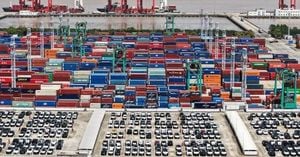Belarus has set the stage for a new wave of geopolitical tension in Eastern Europe with its latest proposal: the construction of a second nuclear power plant, this time with a clear aim to supply electricity to Russian-occupied regions of Ukraine. The announcement, made on September 26, 2025, during a high-profile meeting at the Kremlin between Belarusian President Alexander Lukashenko and Russian President Vladimir Putin, has already sparked fierce debate both within the region and beyond.
Lukashenko presented the idea in Moscow, stating that if the decision were made, "we will immediately begin building a new power unit or a new station if there is a need for electricity in western Russia and in the liberated regions," referencing the Ukrainian territories under Russian control. As reported by Reuters and echoed across global outlets, this language—"liberated regions"—mirrors the Kremlin's terminology for the Kherson, Zaporizhzhia, Luhansk, and Donetsk areas, which Russia claims to have annexed since 2022. These claims, however, remain recognized only by North Korea, with the rest of the international community, including Ukraine, viewing them as temporarily occupied territories.
Putin, for his part, appeared to throw his support behind the proposal, albeit with caveats. He responded, "financing is not a problem at all. If there is a consumer who will accept electricity and pay the required tariff, this is not a problem at all." Yet, he stopped short of confirming whether Russia would provide direct financial backing for the new plant, leaving the specifics of funding notably vague.
The proposed location for the plant is in the east of Belarus, strategically positioned to deliver power to both western Russia and the Russian-held Ukrainian regions. According to statements from Lukashenko, construction could begin immediately upon agreement, signaling an urgency that many observers interpret as a bid to further solidify Belarus's role in the Kremlin's regional ambitions.
This isn’t Belarus’s first foray into nuclear energy. The country's inaugural plant, the Astravets Nuclear Power Plant, was launched in November 2020. Built by the Russian state atomic energy corporation Rosatom and financed by a $10 billion loan from Moscow, the Astravets facility was itself a source of controversy. Neighboring Lithuania, whose capital Vilnius sits just 40 kilometers from the plant, voiced strong concerns over safety and the proximity to its borders. Protests erupted in Lithuania at the time, highlighting the fraught nature of nuclear development in the region.
But the latest proposal carries even deeper geopolitical implications. As reported by the Associated Press and Euronews, it underscores the close—and increasingly dependent—relationship between Lukashenko and Putin. Lukashenko, who has ruled Belarus for over three decades, has consistently aligned his country with Russian interests. In 2022, he allowed Russian troops to use Belarusian territory as a launching pad for the full-scale invasion of Ukraine, and subsequently authorized the deployment of Russian tactical nuclear missiles within Belarus. The two leaders meet more frequently than Putin does with any other foreign head of state, a fact noted by Reuters and Ukrainska Pravda.
Not everyone is convinced that this partnership is in Belarus’s best interests. Sviatlana Tsikhanouskaya, the exiled leader of Belarus's opposition, did not mince words in her condemnation. Speaking to the Associated Press, she said the proposal puts "all of Europe at risk." She added, "By proposing that Putin build a second nuclear power plant in Belarus to supply electricity to occupied territories in Ukraine, Lukashenko once again proves he is complicit in Russian aggression. He is trading Belarusian sovereignty for power and profits from war crimes." Her remarks reflect widespread unease among opposition figures and many in the international community, who see the move as further evidence of Belarus’s deepening subservience to Moscow.
The timing of the proposal is also significant. As the West, led by the United States under President Donald Trump, continues to apply pressure on Lukashenko’s regime—offering incentives such as sanctions relief in exchange for the release of political prisoners and steps toward rapprochement—Belarus appears to be doubling down on its eastern alliances. The nuclear plant plan is a clear signal that, at least for now, Minsk sees its future firmly tethered to Russia.
For Russia, the prospect of a friendly neighbor building infrastructure to support its military and administrative hold over contested Ukrainian territory is a strategic boon. The Kremlin’s public support for the plan, even if noncommittal on the financing details, demonstrates both the symbolic and practical value Moscow places on its alliance with Belarus. As the war in Ukraine drags on, reliable energy supplies to the occupied regions are a logistical necessity—and a political statement.
Yet, the proposal also raises the specter of nuclear risk on Europe’s doorstep. The region’s fraught history with nuclear power—Chernobyl remains a living memory for many—means that any new project is bound to attract scrutiny. Lithuania’s protests over Astravets in 2020 are a reminder that neighboring countries view Belarusian nuclear ambitions with deep suspicion, especially when paired with Moscow’s military objectives.
The international response to the Belarusian proposal is still developing. Most Western governments have yet to issue formal statements, perhaps waiting to see whether the plan advances beyond rhetoric. However, the political context is clear: any move that deepens the energy and security ties between Minsk and Moscow is likely to be viewed with alarm in European capitals and Washington alike.
At the same time, the economic rationale for the project remains uncertain. Putin’s comments about financing being "not a problem" presuppose a consumer—meaning that the occupied Ukrainian regions, or perhaps western Russia, would pay for the electricity at market rates. Whether these regions have the financial wherewithal, or the necessary infrastructure, to make this a reality is an open question.
Meanwhile, the Belarusian opposition and much of the international community remain wary. As Tsikhanouskaya’s comments underscore, the issue is not just about energy or economics; it’s about sovereignty, regional security, and the future direction of Belarus itself. The proposal for a new nuclear power plant is, in many ways, a microcosm of the broader struggle playing out in Eastern Europe—a struggle over borders, alliances, and the very nature of national independence.
As the dust settles from the high-profile Kremlin meeting, one thing is clear: Belarus’s nuclear ambitions are now inextricably linked to the conflict in Ukraine and the shifting balance of power in the region. Whether the plant is ever built, the debate it has sparked will reverberate far beyond the borders of Belarus for some time to come.





